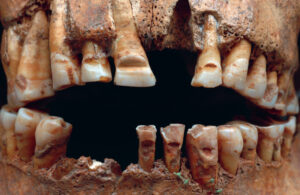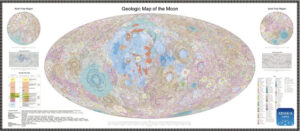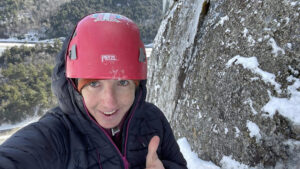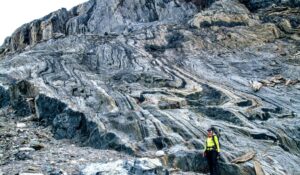Ancient Egyptians had inhuman help to build the Sphinx, a New York University group boldly suggests.
Did little green men or some other intelligence from the stars help construct the symbolic, headdressed cat? No, the team says — actually, the aiding force was a lot closer to home.
Replicating conditions from 4,500 years ago, they concluded that that wind likely helped shape the Sphinx, according to a press release.
“Our findings offer a possible ‘origin story’ for how Sphinx-like formations can come about from erosion,” said Leif Ristroph, the senior author of the study. “Our laboratory experiments showed that surprisingly Sphinx-like shapes can, in fact, come from materials eroded by fast flows.”
The flows Ristroph referred to comes from airborne sand. His team studied yardangs, mushroom-shaped desert structures formed by this sweeping erosion.

A yardang in China. Photo: Shutterstock
They first created rough-shaped formations with clay surfaces and less erosive inner materials that mimicked the northeastern Egyptian desert.
Then they subjected the blobs to the force any desert dweller knows at least as well as the sun — stiff wind.
Amazingly, the once-shapeless lumps of material assumed the basic shapes of Sphinxes, the team said.

Harder material became the head of the lion and other features — an undercut neck, outstretched paws, and arched back — also developed. Photo: NYU Applied Mathematics Laboratory
“The unexpected shapes come from how the flows are diverted around the harder or less-erodible parts,” Ristoph explained. “There are, in fact, yardangs in existence today that look like seated or lying animals, lending support to our conclusions.”
Their paper awaits publication in the journal Physical Review Fluids.
And the research addresses one of the world’s oldest remaining mysteries surrounding a monument. At 73 meters long and 6 meters high, the Sphinx is one of the largest known proper monuments — or constructed objects whose chief purpose is to commemorate. But historians still debate its history and origin.






